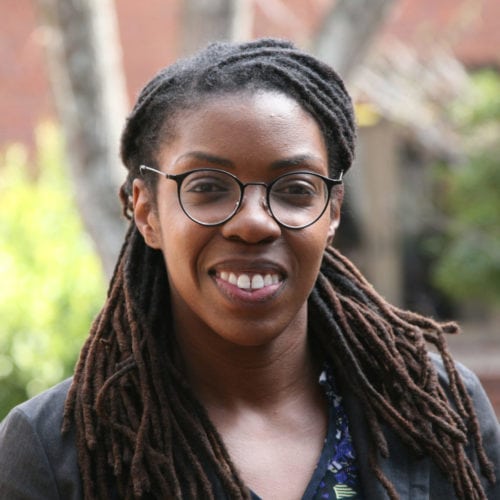Education
Ph.D. – University of Michigan – Ann Arbor
M.S. – University of Michigan- Ann Arbor
B.S. – Albany State University
Research Interests
Field research interests integrate field, laboratory, and museum studies to explore connections between organisms and biogeochemical cycles. The major foci of my research are to (1) characterize mechanisms by which organisms alter ecosystem functions and (2) characterize physiological and community responses to environmental change via interdisciplinary studies merging ecology and stable isotope biogeochemistry. Classroom research interests aim to characterize the role of active learning strategies, collaborative group work, and experiential learning improve student learning outcomes.
- Ecosystem Ecology
- Terrestrial Ecology
- Science Education
Selected Publications
Crumsey-Forde, J.M. and A.T. Rugenski (2020). Using Student Perceptions and Cooperative Learning to Unpack Primary Literature on Global Change. CourseSource. https://doi.org/10.24918/cs.2020.35
Crumsey, J.M., J.B. Searle, and J.P. Sparks (2019). Isotope values of California vole (Microtus californicus) hair relate to historical drought and land use patterns in California, USA. Oecologia 190(4): 769-781.
Crumsey, J.M., Y. Capowiez, M.M. Goodsitt, S.C. Larson, J.M. LeMoine, J.A. Bird, G.W. Kling, and K.J. Nadelhoffer (2015). Exotic earthworm community composition and soil texture impacts on biogeochemical cycles in temperate forest soils. Biogeochemistry 126.3: 379-395.
Crumsey, J.M., J.M. LeMoine, C.S. Vogel, and K.J. Nadelhoffer (2014). Historical patterns of exotic earthworm distributions inform contemporary associations with soil physical and chemical factors across a northern temperate forest. Soil Biology and Biochemistry, 68: 503–514.
Crumsey, J.M., J. M. LeMoine, Y. Capowiez, M.M. Goodsitt, S.C. Larson, G.W. Kling, and K.J. Nadelhoffer (2013). Community–specific impacts of exotic earthworm invasions on soil carbon dynamics in a sandy temperate forest. Ecology, 94(12): 2827–2837.
Mortazavi, B., M.H. Conte, J.P. Chanton, M.C. Smith, J.C. Weber, J.M. Crumsey, and J. Ghashghaie (2009). Does the 13C of foliage-respired CO2 and biochemical pools reflect the 13C of recently assimilated carbon? Plant Cell and Environment, 32(10): 1310-1323.

